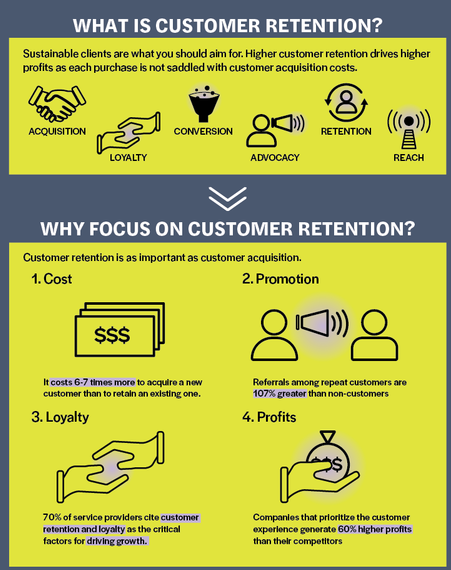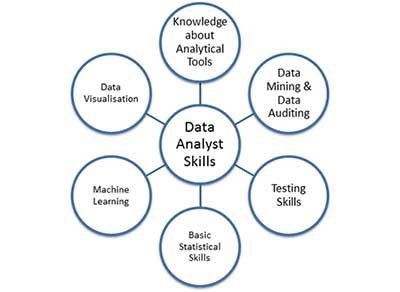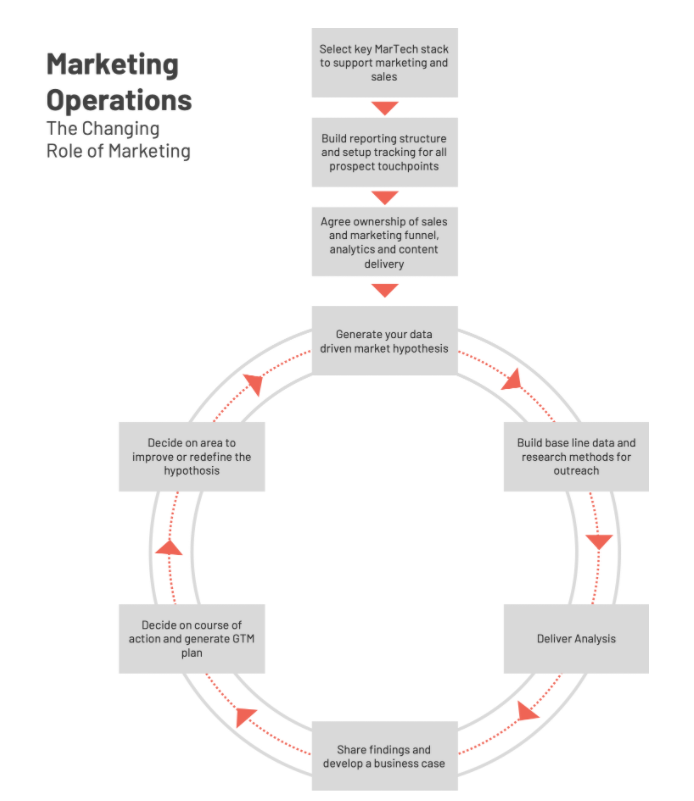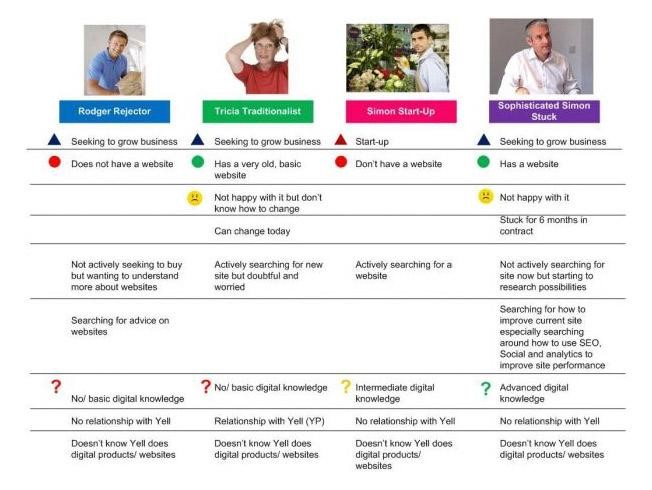How the back office can positively impact your marketing campaigns

It has been known for a long time that acquiring customers can be as much as five times more expensive than retaining existing customers and securing a second purchase. The cost of acquiring new customers has also doubled in the last five years, which means it is becoming more important than ever to look at ways to draw customers back to your brand.
Whether you’re a small athleisure startup or a successful company that produces the best call center software, turning first-time buyers into repeat customers is not an easy task. But a combination of personalized and timely communications, alongside an experience that meets customers’ expectations the first time around, can be foundational pillars in a successful retention strategy.

In this article, we will be looking at how the back office can be a useful asset in your marketing campaigns, more specifically, customer retention marketing campaigns.
What is the back office?
The back office is a term used for company employees and departments that do not interact with customers such as accounting teams, IT, administrative tasks, etc. This means that they are not directly client-facing. The front office is the staff who directly interact with customers. This includes the marketing team, contact center, and sales department. The back office also generates less revenue for the company compared to the front office staff.
You might be thinking: How can an accountant that works in the back office, who calculates profit margins and uses a landed cost formula, have an impact on my marketing? At first sight, it may seem like the back office has no input in customer retention or marketing. But, this is far from true.
Why is the back office important?
Even though the back office is composed of a variety of behind-the-scenes roles that do not directly interact with the customer, data has proven that the back office is responsible for 60% of the customer experience.
The reason for this is that providing a good customer experience should begin way before the customer actually approaches your company. Businesses that have a significant gap between their front and back offices run the risk of providing bad customer service.
This is particularly detrimental in eCommerce where 66% of customers agree that a positive customer experience is crucial to a successful business. Without good customer service, you reduce your eCommerce store efficiency and increase customer churn.
Providing on-time payment to staff and having a well-run human resources department are back office tasks that are vital to employee satisfaction. Without high employee satisfaction, customer experience will be adversely affected. But, it doesn’t just end there for the back office.
The Data Analyst
Big data is an important part of any small or large business. This means having the ability to mine the data, process it, and analyze it to produce useful insights. More specifically, when you’re thinking about customer retention strategies and potential marketing techniques, you need to find the cause of the issue. This can only be identified through data collection.
The data analyst is a key player in the back office. Their primary duties include implementing various collection methods, interpreting data, and analyzing data points that can be used to forecast marketing trends.

Sounds important. But this form of data analysis comes under marketing operations and it is often overlooked by the more creative, front office marketing employees. Why?
Marketing vs operations
When managed incorrectly, marketing objectives may seem to be in direct conflict with operations objectives. For example, in an ecommerce business, operations may decide to use retail inventory management software to more efficiently carry out inventory management, minimize cost, and general waste. Marketing, however, prefers an abundant amount of ecommerce inventory to make sure that stock is plentiful for the customer.
Front office marketing teams are rewarded for increasing sales, whereas back office marketing operations and data analysts are rewarded for reducing costs. That being said, when marketing and operations work together, the company will have a better understanding of the customer and the knowledge required to implement successful marketing strategies.
How to use data
Using data to understand which channels are the most effective is crucial for business success. Carrying out back office analytics will help you to identify which digital channel is successful and which isn’t performing at the level required. This will allow you to focus your marketing efforts and budgets in the correct direction.

Collecting and analyzing data will provide insight into various marketing channels: direct, organic search, paid search, social media, and email. This will enable you to make informed business marketing decisions. But there’s more.
Personalization
Using data sources will allow you to investigate which channels your customers are buying from. But it will also allow you to create personalized customer communication based on that data.
Statistics show that 90% of consumers believe that personalization of marketing and adverts is vital, but only 5% of companies actually use personalization. In fact, 60% of marketing teams find personalization difficult. Personalization is also useful in customer retention. 1 in 3 consumers claimed they stopped purchasing from a brand due to the lack of personalization.
Consider this scenario. You’re a company that provides order management software. You send an email marketing campaign to a potential prospect. This email includes their name, business type, and accurate information that relates to them about why they should acquire your services. The likelihood of them becoming a customer is far greater than if you sent an impersonal email.
Here how you can create a successful personalized marketing strategy:
Collect as much data as possible
It’s important to gather the largest and most accurate dataset possible. This data can come from surveys, emails, click data, shopping cart data, and purchase history data. The more data you collect the easier it will become to separate your audience into groups and personalize your marketing. This separation of the audience into categories is called segmentation.
Create user personas
After you’ve collected your data you can begin to create user personas. This is the process of separating or segmenting your audience based on factors such as interests, social media platform preferences, age, gender, location, and many more. This process is vital as it allows you to better understand your customer habits. So, you can then create specific marketing campaigns and adverts that suit your customer’s needs.

Create your personalized marketing campaigns
The final step is fairly self-explanatory. Let the insights you’ve acquired steer the marketing content that you create.
Another option you have is using marketing automation tools. This will still require you to analyze your own data and segment your audience. But, the automation tool will then help you to create a more meaningful relationship with your potential customers. This is done through behavioral trigger emails, lead nurturing, social media scheduling, and many more useful features.
Automation
As we’ve mentioned throughout this article, a good customer experience is crucial to increasing customer retention. When it comes to ensuring customers come back, the post-purchase experience can be make or break. Almost 9 out of 10 consumers say that they will stop doing business with a brand after a bad experience. It is highly unlikely that if someone has a negative experience with your brand, they will come back and buy again.
In order to find out how to solve that, we must look at what typically goes wrong. Looking into reviews on Trustpilot, research has shown that 77% of 1-3 star reviews are not related to products, but to operational issues that happen after the buy button. This could be things like a lack of a warehouse management system, which could result in selling items that are out of stock, mispicking items in the warehouse, missing cut-offs for next day delivery, and so on and so forth.
All of these types of errors are directly related to the operations of a business, and they are all completely preventable. One way you can positively impact customer experience and retention is by automating operations.
Why should you automate operations?
Automating operations is a reliable way to produce a consistently positive customer experience that reduces customer churn. Aside from the fact that automating operations is cost-effective because it reduces the number of staff required to carry out operation roles, there are many other advantages.
Automation has the ability to increase your productivity. This can be achieved through electronic forms. This automation process converts any paper documents into digital files that can be used to provide data insight, minimize errors, and improve customer experience.
Automating your company workflow is also incredibly useful. This allows you to send personalized content to customers at the exact right time. For example, this might be a follow-up email after a customer subscribing to a mailing list. This follow-up can prove vital to customer acquisition and retention. It also increases organization and reduces repetitive tasks. Research shows that repetitive tasks cost up to $5 trillion per year globally and company staff spend almost 70 days per year on these unengaging tasks. Reduced employee engagement results in reduced productivity which can have an adverse effect on customer experience.
Throughout this article, we have proven the direct link between a positive customer experience and an increase in customer retention. We have also proven that customer experience can be dictated by the actions of the back office.
Creating efficient and effective marketing campaigns requires the unity of the front and back office. Without researching, collecting, and analyzing internal data, your company’s marketing campaigns will suffer. The back office has the ability to map out and understand your customers’ DNA and help to develop an excellent customer experience, whether that’s through creating personalized communication for your customers, or automating operations to minimize errors and increase productivity.

Nick Shaw is the Chief Revenue Officer (CRO) of Brightpearl, a leading provider of inventory, warehouse and order management software. He is responsible for Global Marketing, Sales and Alliances for the leading retail inventory management software provider. Nick has written for sites such as Pandadoc and Antropy. Here is Nick’s LinkedIn.



